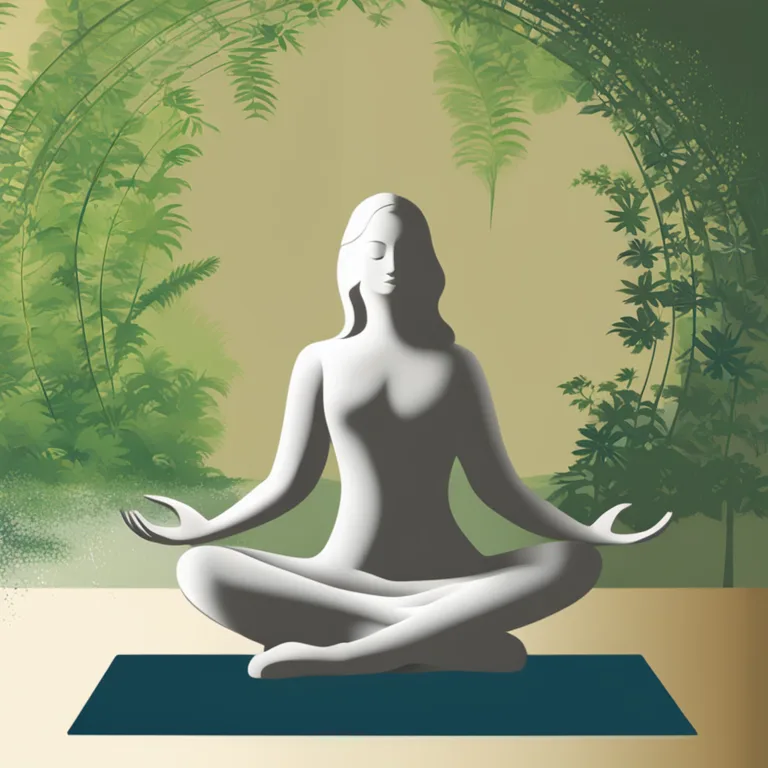
The Essence of Exteroceptive Meditation
Discover the art of exteroceptive meditation techniques, enhancing mindfulness by engaging with external stimuli.
article by Hina Kurosawa
Meditation and Perception
Meditation has traditionally been viewed as an introspective practice. However, a lesser-known branch called exteroceptive meditation turns the focus outwards. In exteroceptive practices, the meditator engages directly with external stimuli, tuning into the immediate sensory experiences provided by the environment. This method has gained traction in recent years because it helps individuals ground themselves in the present moment, enhancing their mindfulness and enabling a unique connection with the world around them. Introducing this technique, we explore the foundational understanding of exteroceptive mindfulness and its benefits.

Basics of Exteroceptive Techniques
Exteroceptive meditation begins with selecting an external focus. This could be anything from the rhythm of one's own breathing, the caress of a breeze against the skin, or the intricate patterns on a leaf. Contrary to internal concentration methods, this practice encourages open attentiveness to external sensations. The meditative focus might shift from sound to touch, or from sight to smell, employing the full range of sensory perception. Participants often report feeling more connected to their surroundings and experiencing a heightened state of awareness after these sessions.

Sound Meditation
One popular exteroceptive method is sound meditation. Practitioners focus on ambient noises, from the far-off chirping of birds to the subtle hum of electrical appliances. The key is not to judge or analyze the sounds but simply to acknowledge their presence and let them pass. This form of meditation can be exceptionally calming and is an ideal starting point for exteroceptive practice. It can be done virtually anywhere and requires no special equipment, making it highly accessible.

Visual Connection
Turning to the sense of sight, visual meditation is about observing the world without an agenda. Practitioners might focus on the flame of a candle or the movement of clouds. The practice helps refine attention, teaching the mind to notice details that often go overlooked. It also has the potential to foster creativity by inspiring a greater appreciation for ordinary beauty. Individuals practicing visual meditation find a new depth to their vision, seeing the world with greater clarity.

Tactile Awareness
In tactile meditation, we connect with the sense of touch — the texture of fabric beneath our fingers, the sensation of weightlessness while swimming, or the contrast of warm sun on our faces and cool grass at our feet. This form often encourages dynamic meditation, which can include walking or feeling textures. By focusing on the sense of touch, we become acutely conscious of our body's interaction with space and objects, which reinforces our embodiment and presence in the world.
Olfactory and Gustatory Practices
Incorporating the olfactory and gustatory senses, aromatic and culinary meditations involve focusing on scents and tastes. Engaging with the aroma of a morning coffee or the flavor profile of a well-cooked meal can become a fully meditative experience. These forms are not only pleasant but also amplify the everyday enjoyment of food and fragrances, often leading to a greater sense of gratitude and momentary indulgence in simple pleasures.
Integrated Exteroceptive Practice
Advanced exteroceptive meditation often blends several sensory practices into one. For instance, attending a meditative walk in nature could involve noticing the sights, sounds, and smells collectively. This holistic approach can lead to a profound experience, deepening the connection between the individual and their environment. When practiced regularly, integrated exteroceptive meditation can increase mindfulness and reduce stress by reinforcing the interconnectedness of oneself with the universe.
Published: 12/20/2023
Modified: 12/20/2023
More predictions
Come back here soon to learn more about yourself and your future


The Art Of Meditative Sketching
Discover how meditation and mindfulness can enhance the art of drawing, offering a peaceful escape and a journey to self-discovery.


Meditation Made Simple
Discover simple meditation techniques perfect for beginners. Integrate mindfulness seamlessly into your daily routine for a more balanced life.


Beginner's Guide To Mindful Meditation
Discover key steps to starting your journey into mindfulness meditation with this beginner-friendly guide.